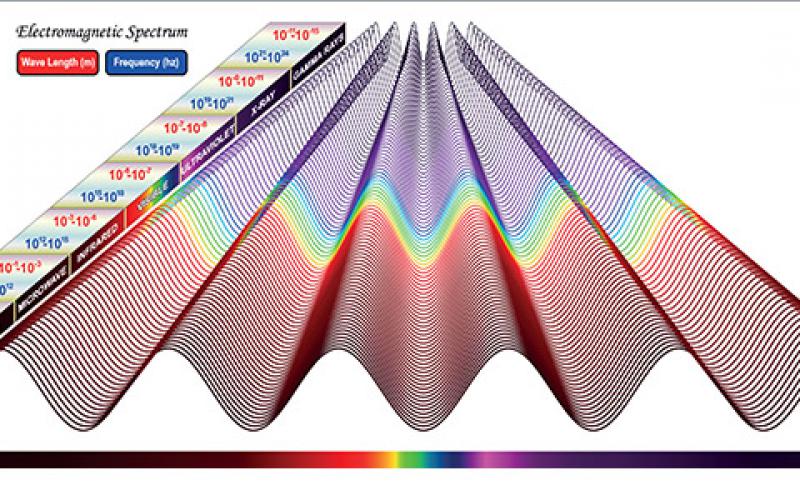
DOD’s Aim for Spectrum Superiority
30.10.2020 Filed in: DOD
The U.S. is facing an increasingly congested, constrained and contested electromagnetic spectrum. Adversaries are challenging the United State’s dominance across the air, land, sea, space and cyberspace domains, which threatens our reliance on the spectrum. And because the United States depends on electromagnetic spectrum for much more than warfighting purposes, our nation’s economic wellbeing is at stake, says Defense Secretary Mark Esper. Secretary Esper outlined a vision for improving all aspects of the electromagnetic operational environment as part of the 2020 Department of Defense EMS Superiority Strategy, released yesterday. Senior leaders from the Electromagnetic Spectrum Operations Cross-Functional Team, under the guidance of DOD’s Chief Information Officer, Dana Deasy, will oversee the execution of the strategy, beginning with the formation of an implementation plan within 180 days. Through the electromagnetic spectrum strategy, the DOD aims to: develop superior capabilities; evolve to an agile, fully integrated electromagnetic spectrum infrastructure; pursue total force electromagnetic spectrum readiness; secure enduring partnerships for an advantage; and establish effective electromagnetic spectrum governance to support strategic and operational objectives. Further investment in electromagnetic capabilities will support the improvement of decision-making information, establish effective electromagnetic battle management, enable spectrum sharing with commercial partners and advance warfighting capabilities. The overall goal is to ensure the U.S. military maintains superiority across the electromagnetic spectrum, the Secretary stressed. “Freedom of action in the electromagnetic spectrum, at the time, place and parameters of our choosing is a required precursor to the successful conduct of operations in all domains,” he said. “EMS [Electromagnetic Spectrum] challenges go well beyond the military battlespace. The EMS is being repurposed for commercial mobile broadband technologies to bolster economic growth and prosperity, which further restricts the DOD’s freedom of action. These sophisticated technologies represent new opportunities for the Department and our national economy. However, they also present new challenges across the competition continuum as the electromagnetic operational environment becomes increasingly complex, Esper added. To develop electromagnetic spectrum capabilities needed for an era of great power competition, the DOD will develop solutions that can perform, operate and adapt in complex operating environment. Any acquired capabilities must maintain interoperability with other systems, allow rapid software and hardware upgrades and rely on a modular open systems approach. “DOD must evaluate campaign-level and operational scenarios through modeling, simulation and testing in representative environments to prescribe appropriate levels of performance and be willing to embrace leap-ahead technology rather than evolutionary acquisition paths,” the Secretary emphasized. “The Department will leverage systems engineering and mission engineering disciplines to achieve a comprehensive approach for development of EMS capabilities across all functions, domains and levels of warfare," he added. Systems engineering will be utilized to develop the rapid and real-time reprogramming capabilities and system architecture standards required to deliver operationally relevant EMS capabilities to the warfighter and maximize the efficient use of resources. Mission engineering will be utilized to define effects chains, identify capability gaps and dependencies, determine and evaluate system and system-of-system performance, and inform investment decisions for EMS capabilities, Esper said. Any advancements in electromagnetic spectrum capabilities must also support U.S. defense intelligence activities. As such, testing infrastructure needs to evolve and expand. “A modernized DOD test and training infrastructure should contain an optimized mix of live, virtual, constructive capabilities and blend realistic adversary, friendly and environmental simulators/emulators with the capability to inject synthetic entities into live platforms and provide operationally realistic electromagnetic spectrum operating environments,” the strategy indicated. “This infrastructure must leverage the defense intelligence enterprise to ensure accurate modeling and simulation of current and anticipated adversary capabilities.” To sustain electromagnetic spectrum superiority in its workforce, the Defense Department will improve warfighters’ capabilities, beginning with the management of all identified EMS professionals and an update of existing and planned training and education, “to ensure the availability of well-rounded EMS professionals to fill critical billets,” according to the strategy. The Department also will track total force readiness in this area. With its allies and partners, the DOD will pursue military-to-military agreements, host nation agreements and agreements with the North Atlantic Treaty Organization (NATO) and other nations to the full portfolio of electromagnetic spectrum capabilities, the strategy states. “This requires the means—software, data standards, transport channels, etc.—to move and process data at machine speeds with allies and partners,” Esper noted. “DOD must encourage our allies and partners to adopt, build or enhance EMS capabilities that will increase our combined coalition EMS capability and capacity with particular focus on near-peer threats. This cooperation includes the need to expand opportunities for coalition EMS testing, training and education in the United States and abroad,” he said.
Announcement from Integrity Engineering & Design Solutions
As businesses are scaling, finding the right talent to meet your needs requires frustrating onboarding logistics, countless hours of training, and increased overhead through employee compensation. Integrity-EDS, will soon be announcing the launch of our next-generation mobile and desktop platform, enabling leaders to hire on-demand talent for as long or as short as necessary. In turn, teams can achieve maximum efficiency without unnecessary downtime, skill development, or overhead.
Interested in learning more?
Click on "Find Out More" below for access to exclusive launch & platform information, feature updates, and beta testing opportunities,
